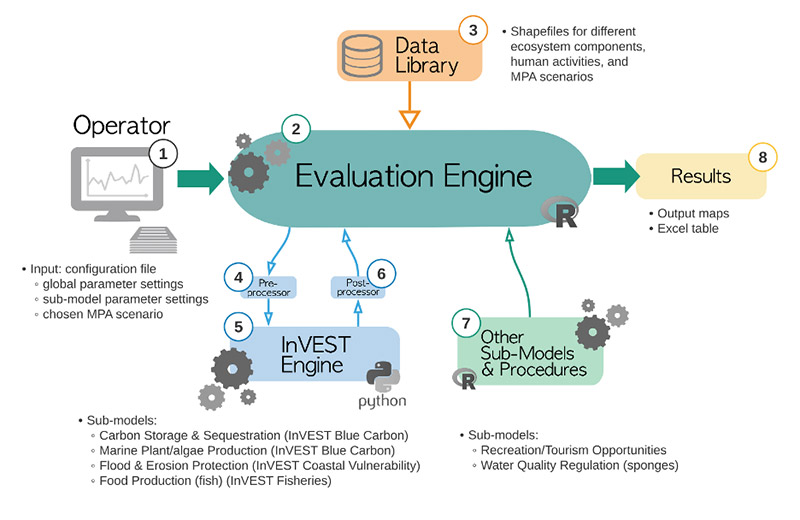Modelling Ecosystem Services from Marine Protected Areas
Project Details
Location: |
British Columbia, 54.82861, -125.18094 | |
Client: |
BC Ministry of Forests, Lands, Natural Resource Operations and Rural Development; Department of Fisheries and Oceans Canada | |
Duration: |
2020 – 2021 (FLNRORD), 2023-2024 (DFO) | |
Team Member(s): |
Cedar Morton, Natascia Tamburello, Caitlin Semmens, Erica Olson, Graham Mushet, Frank Poulsen, Ibrahim Alameddine | |
Practice Area(s): |
Nature Based Solutions | |
Services Employed: |
Ecological modelling, GIS analysis, Natural asset inventory, Natural asset management and decision support, Facilitation & engagement, Science communications |
The Problem We Aimed to Solve
The health of our oceans affects us all. Marine Protected Areas (MPAs) are established to ensure the protection of our oceans for the sustained benefit of humans and the environment. Canada’s Department of Fisheries and Oceans and the Province of British Columbia are part of a broader governance process with Indigenous Nations that is working to establish a network of MPAs along British Columbia’s North Pacific Coast. They needed to know how different MPA network configurations would affect the provision of human and ecological benefits. By developing a spatially explicit model that predicts ecosystem service provision under different Marine Protected Area (MPA) management configurations, ESSA’s is playing a role ensuring the beauty and productivity of our oceans.
How We Helped
ESSA developed the Marine Ecosystems Service Model (MESM), a simulation tool which allows users to input different Marine Protected Area (MPA) configurations and compare how ecosystem service provision changes relative to a baseline. The tool focuses on six ecosystems services, selected using a criteria-based prioritization tool developed in collaboration with our client and project participants. The ecosystem services captured by MESM include: 1) Carbon Storage & Sequestration, 2) Marine Plant/Algae Production, 3) Erosion Prevention, 4) Tourism/ Recreation Opportunities, and 5) Food Production (fish), and 6) Water Quality Regulation (sponges).
Our Project’s Impacts
ESSA worked closely with technical advisors from the provincial and federal governments and member First Nations. We presented our approach as needed to the broader audience of project partners to ensure the MESM would reflect key needs and perspectives. ESSA produced a complete model system, baseline results, automated sensitivity analyses, and a Technical Guidance Document with instructions on how to use the model and interpret its outputs. We also proposed potential methods for evaluating 8 other priority ecosystem services. The MESM continues to grow with additional fish species being added during a follow-up project led by the Department of Fisheries and Oceans (DFO).
- Report not publicly available


